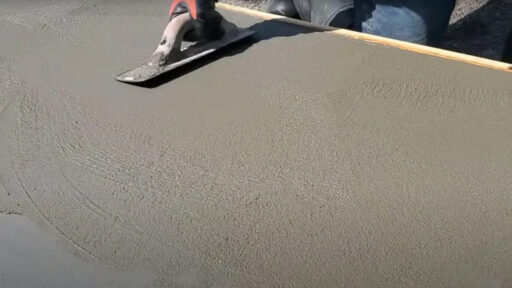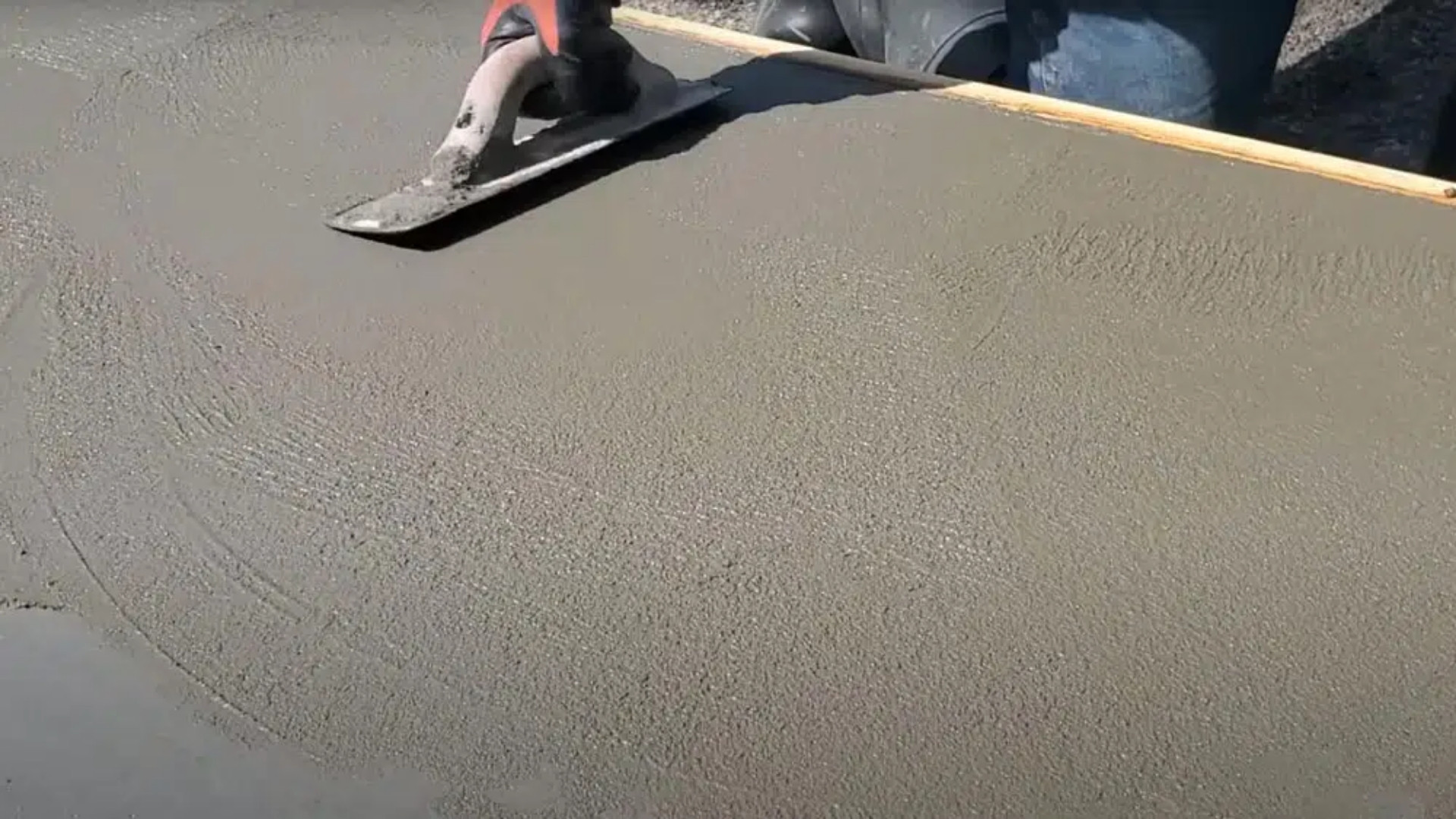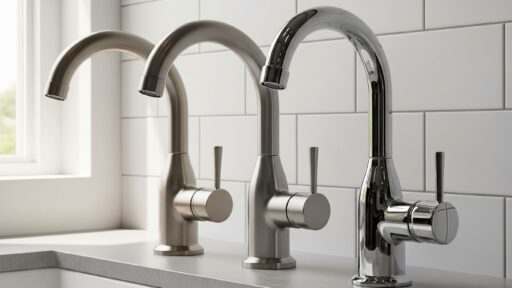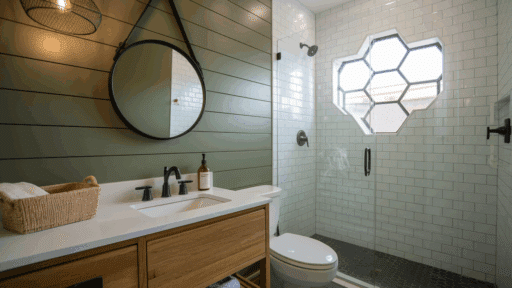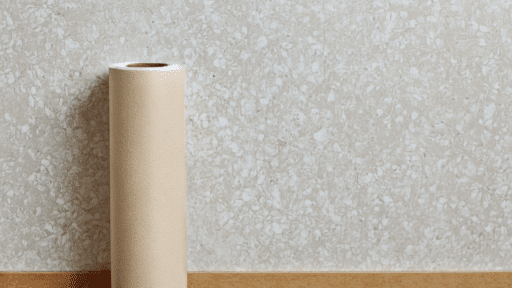Tired of concrete that looks dull, slippery, or too industrial?
Sand-finish concrete offers a stylish, slip-resistant upgrade without compromising durability.
This increasingly popular choice among homeowners and builders provides a natural look with enhanced safety features.
The textured surface prevents slipping even when wet, making it ideal for both indoor and outdoor applications.
You get the durability of smooth concrete at a fraction of the cost of fancy stone or tile, while the rough surface effectively hides small cracks and stains.
Sand-finish concrete combines the strength of regular concrete with an attractive, textured finish that’s both practical and cost-effective.
What Is Sand Finish Concrete?
Sand finish concrete is a textured concrete surface that feels rough like fine sandpaper.
This finish creates a non-slip surface that’s safer than smooth concrete.
This type of concrete combines regular concrete strength with added safety features.
The rough surface provides excellent grip for shoes and bare feet. It looks natural and clean without being too industrial.
Indoors, sand finish concrete provides better traction and grip than smooth surfaces.
The texture helps hide dust, dirt, and small stains naturally.
Outdoors, this finish performs well in all weather conditions.
The rough surface prevents dangerous slipping when wet from rain or water.
It maintains its appearance over time and resists wear from foot traffic and weather exposure.
How Sand-Finish Concrete Is Made?
The finish is achieved by letting freshly poured concrete partially set, then gently washing away the top layer of cement paste.
This exposes the fine sand particles beneath, producing a smooth yet slip-resistant texture that enhances both safety and visual appeal.
How Sand Finish Differs from Other Concrete Finishes?
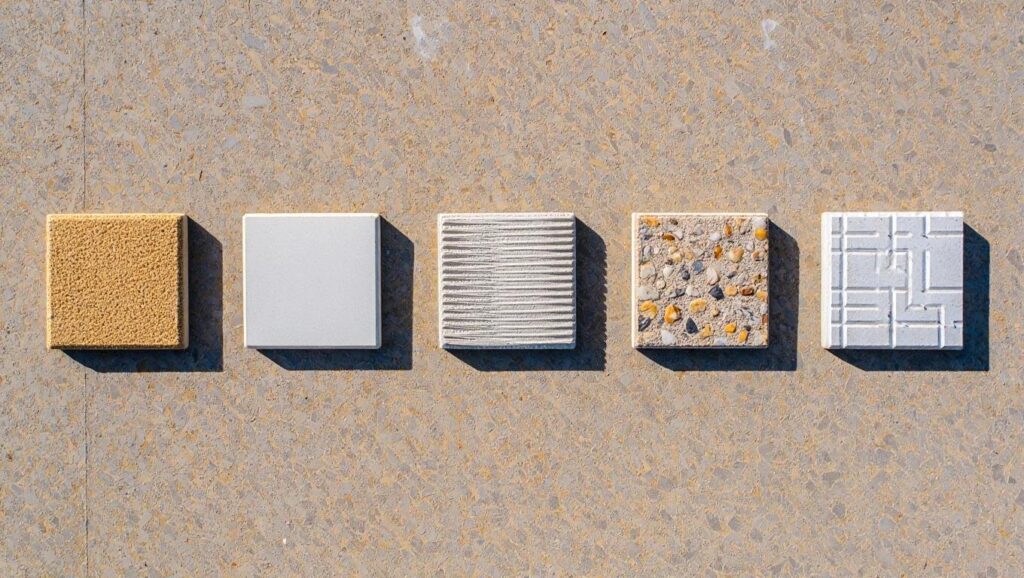
Sand finish concrete stands out from other concrete types in several important ways.
Here’s how it compares to common alternatives
| Finish Type | Texture | Slip Resistance | Cost | Maintenance |
|---|---|---|---|---|
| Sand Finish | Rough, grainy | Excellent | Moderate | Low |
| Smooth/Troweled | Very smooth | Poor when wet | Low | Medium |
| Broom Finish | Light texture | Good | Low | Low |
| Exposed Aggregate | Very rough | Excellent | High | Medium |
| Stamped Concrete | Varied patterns | Good to excellent | High | High |
Sand-finish concrete offers the perfect balance between cost, safety, and aesthetics.
It’s not as expensive as stamped concrete but safer than smooth finishes.
Key Characteristics of Sand Finish Concrete
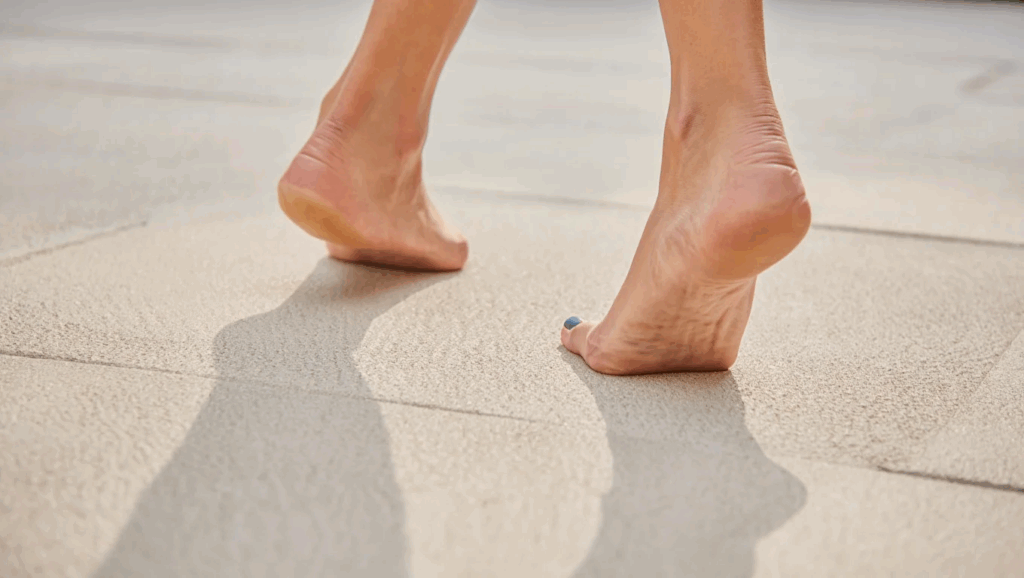
Sand finish concrete has several features that make it stand out from other concrete types.
These characteristics explain why so many people choose this finish for their projects.
- Texture and Feel: Feels like fine sandpaper, with a gentle texture that provides comfort, making it safe for bare feet and evenly applied across the surface.
- Visual Appeal: Features a natural, matte appearance with subtle shadowing, and is customizable with added color to match any style.
- Slip Resistance: Offers excellent slip resistance, making it safer than smooth concrete in wet areas such as pools, patios, and walkways.
- Durability: Offers long-term durability, conceals minor cracks or wear, and can last 20–30 years with proper installation and care.
These features make sand finish concrete a practical choice for many projects.
Sand Finish Concrete vs Exposed Aggregate
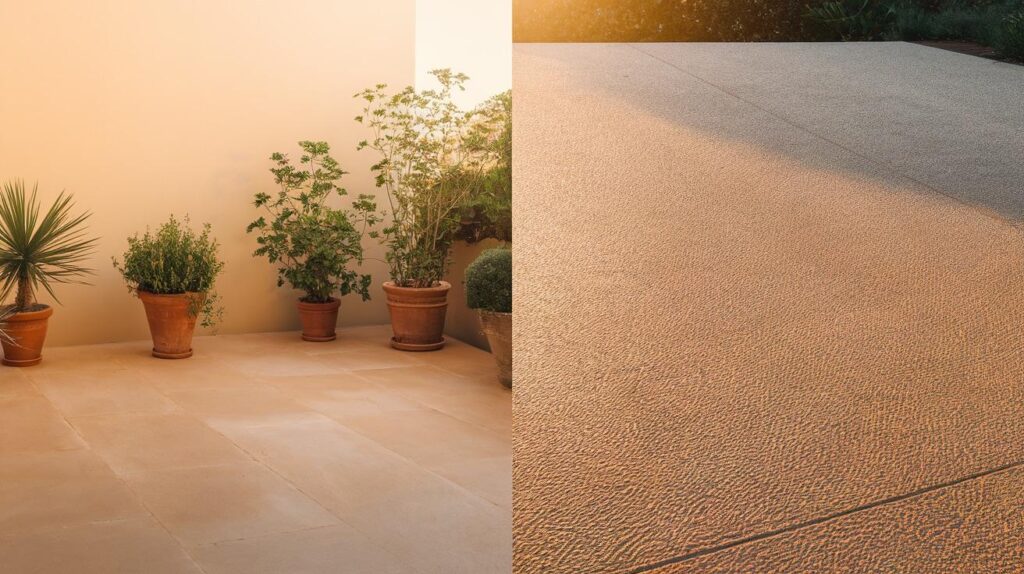
Sand finish concrete and exposed aggregate are both textured surface finishes, but they offer very different looks, feels, and performance features.
Here’s how they compare across key areas:
| Feature | Sand Finish Concrete | Exposed Aggregate Concrete |
|---|---|---|
| Surface Texture | Subtle, grainy texture like fine sandpaper | Coarse, uneven texture with visible stone or gravel |
| Visual Appearance | Matte, clean, and soft-looking with optional tinting | Bold, rugged, and highly patterned due to exposed stones |
| Slip Resistance | Excellent | Good |
| Comfort | Comfortable to walk barefoot | Can be harsh on bare feet or knees |
| Aesthetic Style | Minimalist, natural, and understated | Decorative, high-contrast, and more eye-catching |
| Installation Difficulty | Moderate | High |
| Cost Range | Moderate | High |
| Maintenance Needs | Low | Medium |
| Best Uses | Pool decks, patios, and indoor-outdoor transitions | Driveways, walkways, decorative outdoor features |
While Sand Finish offers smooth comfort and subtle style, exposed aggregate provides a bold texture and a more decorative appearance.
Pros and Cons of Sand Finish Concrete
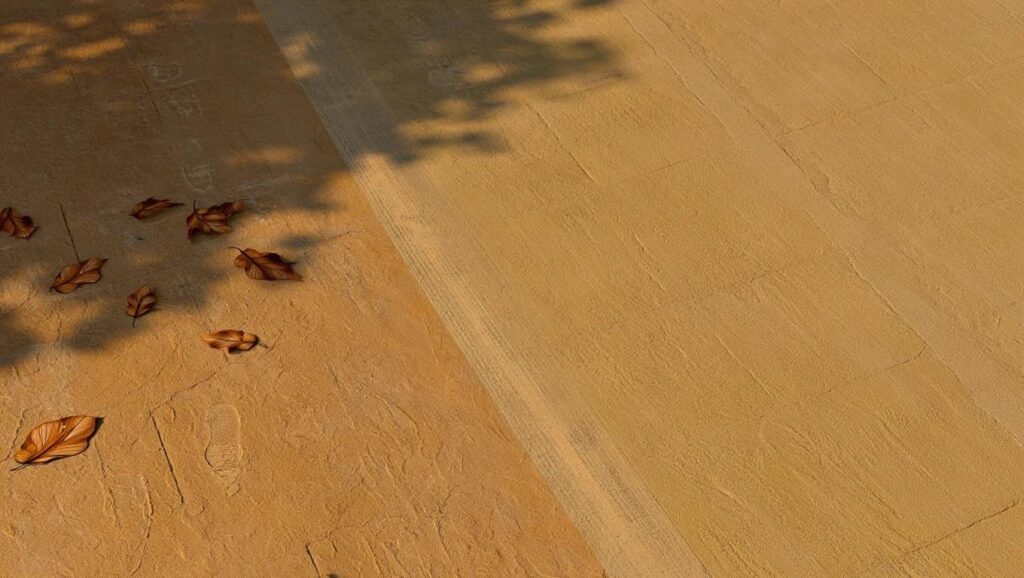
Sand finish concrete has both benefits and drawbacks that you should consider before choosing it for your project.
| PROS | CONS |
|---|---|
| Excellent slip resistance, even when wet | Rougher on bare feet than smooth concrete |
| Hides dirt, stains, and small cracks well | Can be harder to clean thoroughly |
| Costs less than stamped or decorative concrete | Limited color and pattern options |
| Durable and long-lasting | May collect leaves and debris outdoors |
| Easy to maintain with basic tools | Not suitable for areas needing smooth surfaces |
| Eco-friendly, uses natural sand material | Can be rough on your knees if you fall |
| Works well in all weather conditions | May fade slightly over many years |
The benefits usually outweigh the drawbacks for most outdoor projects.
Consider your specific needs and budget when making your choice.
Common Applications of Sand Finish Concrete
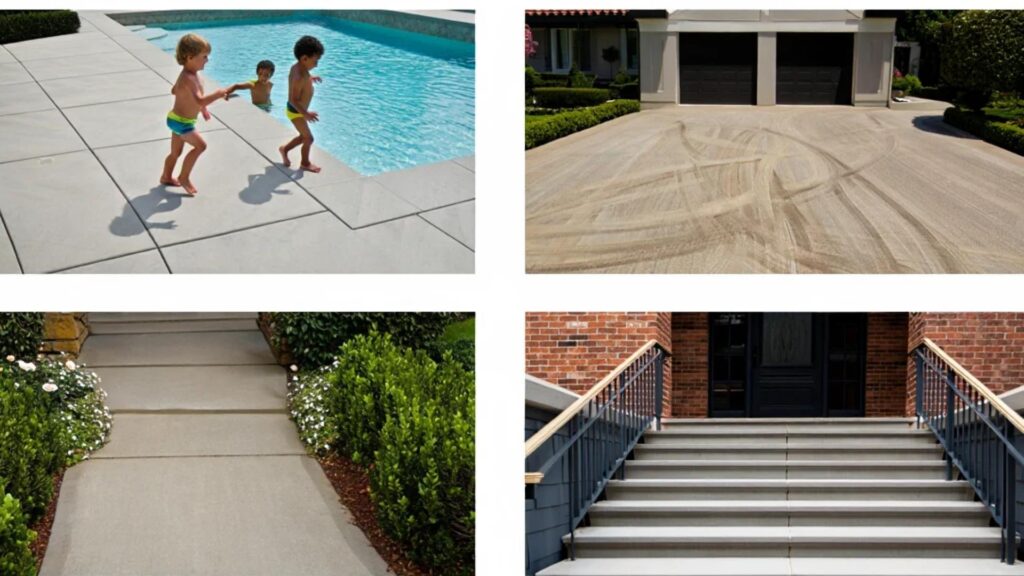
Sand-finish concrete works best in areas where safety and durability are most important.
Here are the most popular places to use this finish:
- Pool Decks and Patios: Textured surface enhances safety around water, stays cooler than smooth concrete, and is a popular choice for pool builders.
- Driveways and Parking Areas: Provides better traction for vehicles, conceals tire marks and stains, and withstands the weight of heavy cars and trucks.
- Sidewalks and Walkways: Offers secure footing in all weather, meets safety regulations, and maintains a clean, attractive appearance for public use.
- Outdoor Stairs and Ramps: Provides extra grip to prevent slips and falls, making it ideal for areas used by children, seniors, or individuals with physical disabilities.
Sand finish concrete is the best choice when you need safety, durability, and good looks all in one package.
Is Sand Finish Concrete Right for Your Project?
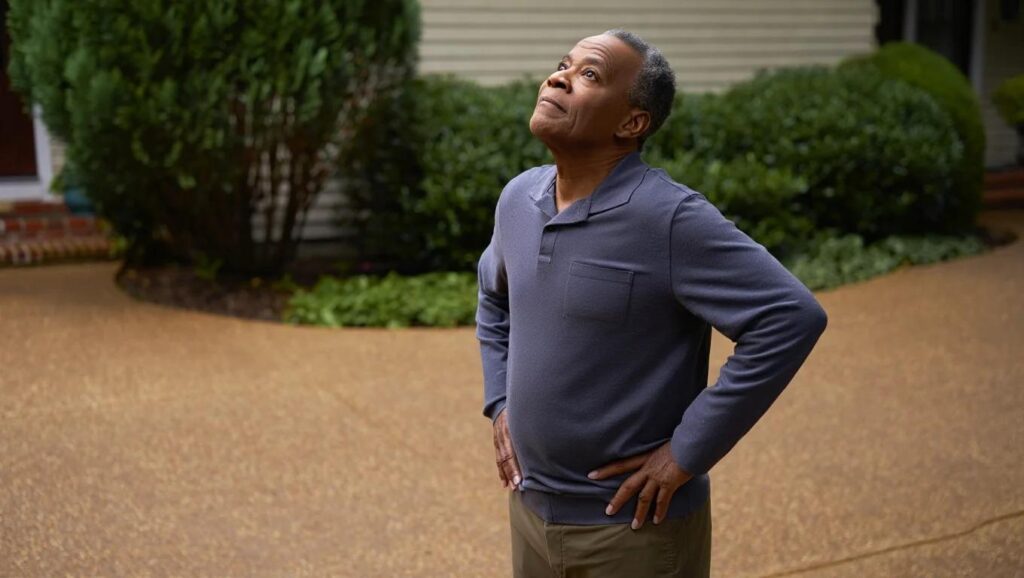
Choosing the right concrete finish depends on your weather, budget, and how you plan to use the surface each day.
Sand finish concrete is safe and rough, but it might not match every design or style you want for your space.
Ask yourself if the surface gets wet or icy, or if it needs to hide dirt and small cracks over time.
If your budget is small but you want more than plain concrete, this finish can still give a clean and nice look.
Think about who will use it, kids, older people, or pets, and if you want something easy to take care of.
Don’t forget about rain, pool water, or lots of foot traffic, since these can change how the surface wears.
Answering these simple questions can help you choose the best finish for your project.
Maintenance Tips for Sand Finish Concrete
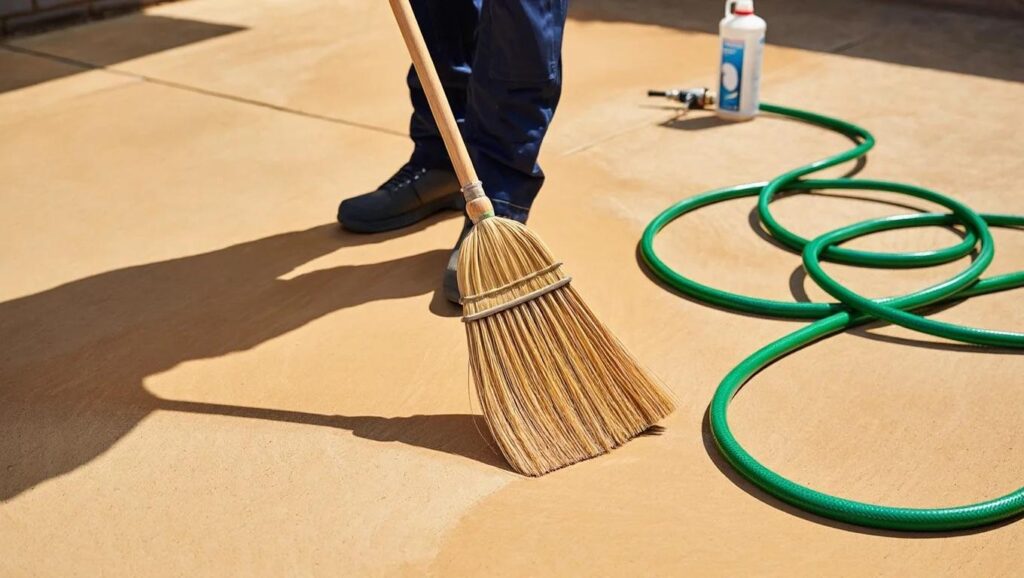
Sand finish concrete needs regular care to look its best and last longer.
Here are simple maintenance steps you can do yourself:
- Regular Cleaning: Sweep weekly to clear dirt and debris, then rinse with a garden hose. Use mild soap with a stiff brush for stubborn stains, avoiding harsh chemicals.
- Sealing the Surface: Apply a textured concrete sealer every 2–3 years using a roller or sprayer to protect against water damage and simplify routine cleaning.
- Seasonal Care: In winter, use plastic shovels and ice melt instead of salt to avoid damage. For summer, inspect for cracks and repair them promptly.
- Stain Prevention: Wipe up spills immediately, especially oil or grease; use absorbent materials and rely on sealing to prevent deep, lasting stains.
Following these simple steps will keep your sand finish concrete looking great for many years.
Final Notes
Sand finish concrete combines safety, durability, and good looks in one practical package.
This textured finish creates a rough surface by pressing sand into wet concrete.
It is best for pool decks, driveways, walkways, and patios.
The rough texture may not be suitable for every project, but it’s ideal when safety is your priority.
Consider your climate, budget, and how you plan to use the space.
Sand finish concrete offers excellent value for outdoor projects.
It’s stronger than smooth concrete and safer when wet.
The natural look fits most home styles without looking too industrial.
Take a moment to consider your unique needs.
This finish could be the perfect solution for your next concrete project.
Looking for more wall/floor finishing ideas? Feel free to click here and explore other blogs that you might enjoy.

